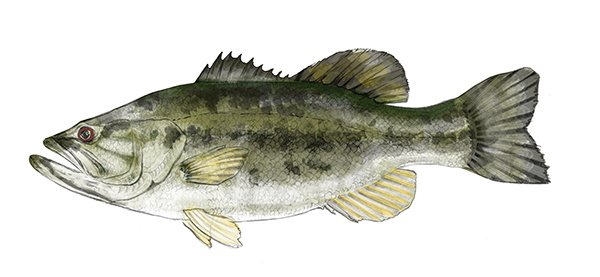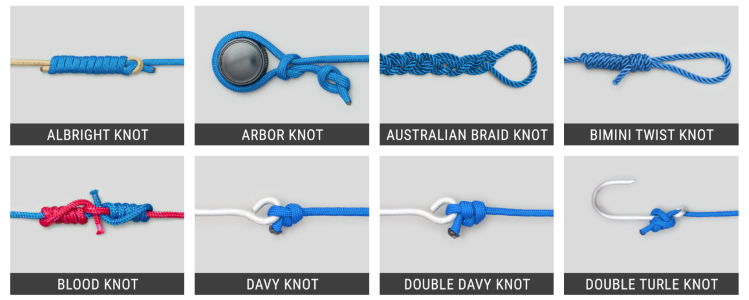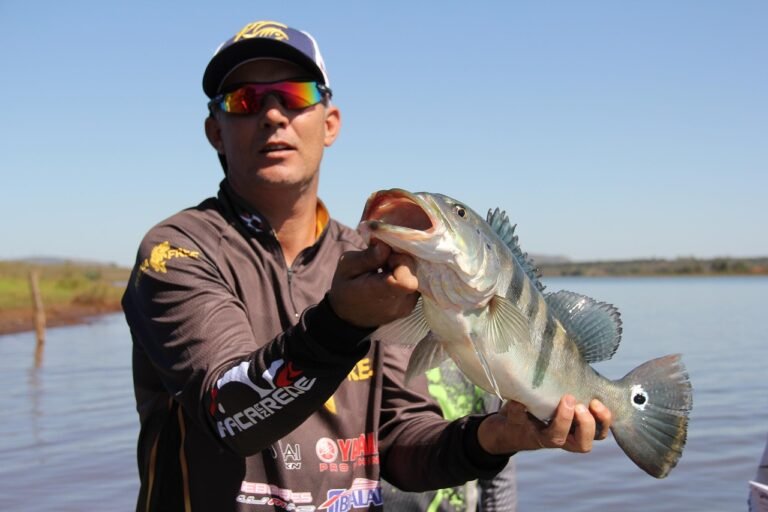Bass in the Jungle: How to Outsmart Fish in the Weeds
Ever stare at a vast expanse of green weeds on a lake and wonder how anyone could possibly fish it? Those dense patches of coontail, milfoil, and hydrilla aren’t just random underwater clutter; they’re like the dense forests of a jungle, creating perfect hideouts for big bass. They offer shade, filter the sunlight, and guide those largemouths right into predictable feeding lanes.
Fishing these weed beds isn’t just about chucking a jig into any open spot you see. Nope, it’s a strategic game, almost like a chess match between you and the fish, using the vegetation and the hidden structure beneath it to your advantage. Read on, and we’ll help you turn that thick green jungle into your personal bass-catching paradise.

1. Get to Know Your Greenery: Weeds vs. Hidden Structure
Before you even think about casting, let’s break down what you’re looking at. Different types of weeds and the unseen structure below them offer unique opportunities.
| Feature | Why Bass Love It | How to Spot It | Best Lure Types |
|---|---|---|---|
| Emergent Mats (hydrilla, lily pads) | Awesome shade, a buffet for bluegill and other baitfish. | Looks like a thick “carpet” on your sonar; super dense mat on the surface. | Hollow-body frog, punching rig |
| Inside Edge (0-5 ft) | The first ambush point for bass cruising by. | Clear water right next to the bank or a thick weed wall. | Weightless stick worm, swim jig |
| Outside Edge (8-12 ft) | Where the water gets cooler and baitfish gather. | A sharp drop-off on your contour map, or a sudden change in depth. | Crankbait, slow-roll spinnerbait |
| Hard Spots (shell, gravel) under weeds | A crawdad diner; holds heat from the sun. | You’ll feel a solid “tick” with your jig; shows up clearly on side-scan. | Football jig, Tokyo rig |
| Isolated Clumps in open flats | A solo ambush spot in otherwise open water. | One lone weed patch on your 360-degree sonar. | ChatterBait, Texas-rigged creature bait |
2. Your Gear: Getting In and Out of the Thick Stuff
You can’t bring a butter knife to a steak fight! Having the right tackle is crucial for wrestling bass out of these dense areas.
- Rod:
- For really punching through mats: Go with a 7’3″ heavy rod with a fast tip. This gives you the backbone to drive the hook home and the power to pull fish out.
- For swim-jigs and ChatterBaits: A 7′ medium-heavy rod offers a bit more feel and versatility.
- Reel: An 8:1 baitcaster is your best friend here. That faster retrieve means you can reel in line super quickly, minimizing the chances of a hooked bass burying itself deeper in the weeds.
- Line:
- For thick mats: You absolutely need 50-65 lb braid. It cuts through vegetation and has zero stretch for solid hooksets.
- For working the edges: 17-20 lb fluorocarbon gives you better feel and less visibility in clearer water.
- Terminal Tackle:
- ¾- to 1½-oz tungsten flipping weights: Tungsten is denser than lead, so smaller weights get through the weeds better.
- 4/0 straight-shank hook: Strong and reliable for punching.
- Bobber stop: Essential for pegging your weight right above your hook.
3. Three Core Ways to Present Your Lure
Now that you know your spots and have the right gear, let’s talk about how to get that bait in front of a bass.
A. Punching the Canopy (When it’s Super Thick)
This is a brute-force method for getting to those bass hiding deep in the mat.
- Rig It Up: Peg a tungsten weight right above a 4/0 hook, then add a beaver-style plastic bait.
- Aim True: Pitch your rig to the darkest, most inviting hole you can find in the mat. Bass often sit directly under these spots.
- The Drop: Let your lure free-fall. Give it about two seconds, then hop it once. Reel up and repeat the process.
- Hold On Tight: Keep your rod low to the water. The moment you feel a bite, rip that fish out fast before it can burrow back into the weeds.
- Pro Cue: Before you start punching, try working the edges of the mat with a frog. Any fish that miss the frog often hit a punching jig if you follow up quickly!
B. Swim-Jigging the Inside Edge (Subtle and Deadly)
This is great for bass cruising the cleaner water right alongside the weed wall.
- Set Up: Use a 3/8-oz white swim-jig with a paddletail trailer.
- Cast Parallel: Throw your jig parallel to the weed wall, letting it “tick” against the weed tips as you retrieve.
- The Pulse: Use a “pulse retrieve” – two quick handle cranks, then a slight pop of the rod. This sudden movement often triggers strikes from bass that might just be following your lure.
C. Dragging the Hard-Patch (When Weeds are Sparse)
If your sonar shows gravel or shells under sparse grass, this is your move.
- Lure Swap: Change to a ½-oz football jig with a Rage Craw trailer.
- Feel the Bottom: Cast past the patch and slowly drag your jig. You’ll feel a distinctive “tick-tick” when you hit that hard bottom.
- Subtle Hops: Use a short hop-pause routine. Strikes here are often subtle, feeling more like added “weight” on your line than a sharp bite.
4. Reading the Seasons: When and Where to Find Them
Bass behavior changes with the water temperature and weed growth throughout the year.
| Season | Weed Condition | Key Zone | Best Time |
|---|---|---|---|
| Pre-spawn (55–60 °F) | Sparse, new grass | First inside edge | Mid-afternoon sun |
| Spawn (60–70 °F) | Growing canopy | Pockets inside flats | All day |
| Summer (70–85 °F) | Thick mats + hyacinth | Outside edge & holes | Dawn (frog bite); midday (punch) |
| Fall (60–70 °F) | Weeds dying back | Hard spots on outside edge | Windy afternoons |
| Winter (<50 °F) | Sparse, only greenest weeds | Deepest vegetation | Midday (slow drag) |
5. Troubleshooting Common Weed-Bed Headaches
Don’t worry, even pros get snagged or miss fish. Here’s how to fix some common frustrations:
- Frog blow-ups, no hookups: This is classic! Try downsizing your frog or adding a small feather trailer. The key is to wait one full second after the blow-up before you set the hook. Let them eat it!
- Punch weight hangs in stalks: Annoying, right? Slide a small bead between your weight and your hook eye. It helps deflect the weight and keeps it from getting stuck.
- Bass short-striking swim-jigs: If they’re just swatting at it, try switching to a willow-leaf spinnerbait. The flash often triggers a more aggressive, committed strike.
- Too much slime on crankbait: If your crankbait keeps sliming up, switch to a lipless rattle bait and rip it through the weeds. It often clears the bait and can trigger reaction bites.
6. Your Weed-Bed Code of Ethics
Let’s keep these amazing weed beds healthy for everyone.
- Respect the Mat: If you’re in a boat or kayak, try to stay off the thickest mats. Your prop wash can kill vegetation and disturb the fish.
- Go Barbless (Often): When you’re fishing these thick spots, consider pinching down your barbs. It makes releasing fish tangled in the weeds much quicker and easier, reducing stress on the fish.
- Clean Up: If you see old line or trash tangled in the mats, take a moment to pull it out. Our fish deserve a clean home!
Your Quick Packing List for the Jungle
Keep it simple but effective. This fits in a one-tray box:
- Braid scissors
- Peg stops (a 10-pack is good)
- ½-oz & 1-oz tungsten weights
- 2 frog colors (black and white are universal)
- 10-pack of beaver plastics (green pumpkin is always a winner)
- 3 swim-jigs (white, bluegill, black-blue)
Ready to punch your personal best out of the toughest cover? Tie on that heavyweight braid, pick the thickest greenery, and turn that jungle into your next weigh-in ticket! What’s your favorite go-to bait for working the weeds?
Read more to study fish habits.





